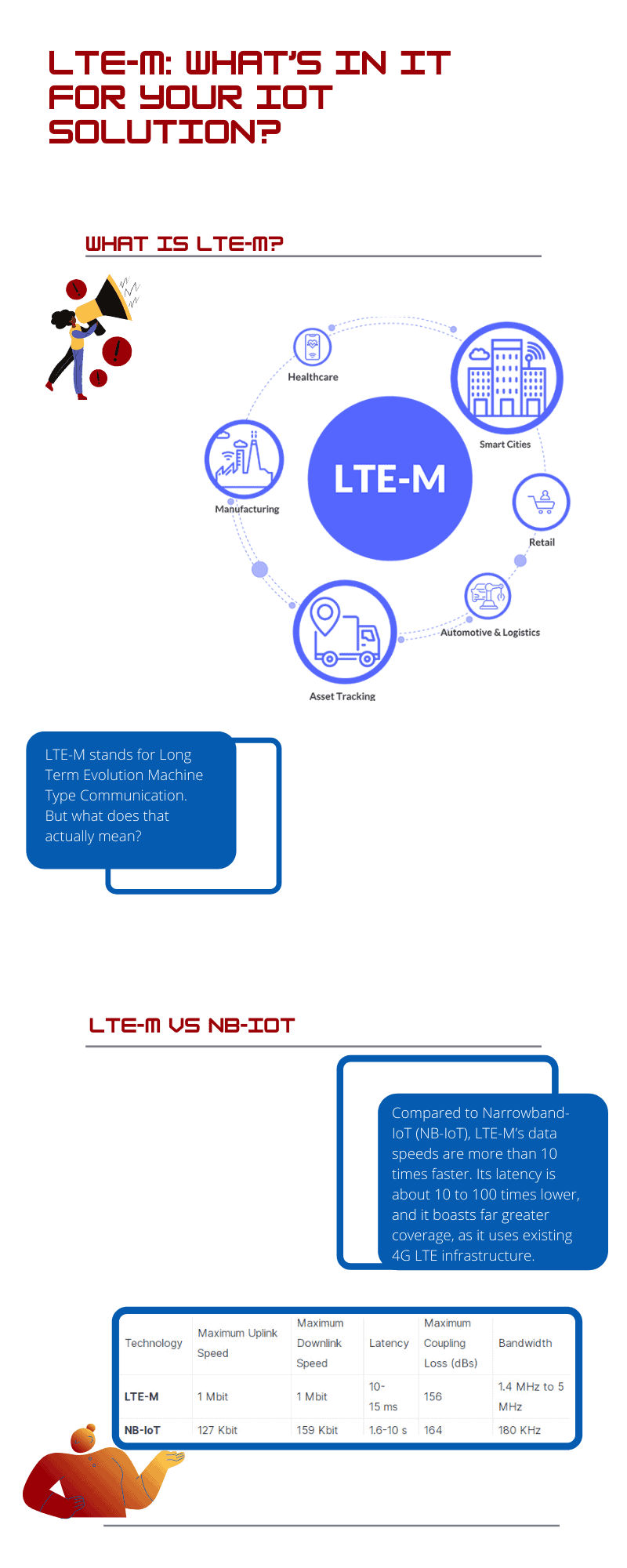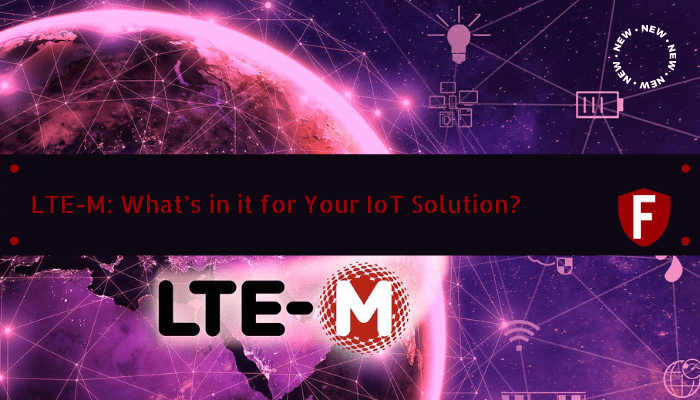
What is LTE-M?
LTE-M stands for Long Term Evolution Machine Type Communication. But what does that actually mean?
Simply put, LTE-M is a type of the fourth generation (4G) cellular network that is specifically designed for the Internet of Things (IoT). It is a low-power wide-area network (LPWAN) – a specialized category of wireless narrowband networks designed to maximize coverage, lower costs and reduce power consumption for IoT devices.
Why Rely on LPWANs?
With 2G- and 3G phase-out accelerating globally, LPWANs are positioned as future-proof alternatives for cellular IoT. LTE-M and Narrowband-IoT (NB-IoT) – the other cellular LPWAN variance – utilize the same power-saving features, bringing enhanced coverage, longer battery life, and reduced costs compared to previous cellular generations. Using LPWANs, IoT devices can transmit and receive large amounts of data without draining the battery, as is the case with 2G, 3G, and 4G networks. Batteries in LTE-M devices, for example, can last 10 years or more.
Though both variances present distinct advantages over previous cellular generations, LTE-M and NB-IoT are not created equal. There are some distinct differences to look at when deciding between the two for your IoT solution. In general, you will find that LTE-M can address most if not all NB-IoT use cases, but it is not the other way around.
LTE-M vs NB-IoT
Compared to Narrowband-IoT (NB-IoT), LTE-M’s data speeds are more than 10 times faster. Its latency is about 10 to 100 times lower, and it boasts far greater coverage, as it uses existing 4G LTE infrastructure. However, while both of these LPWANs work well indoors, NB-IoT has a slightly higher Maximum Coupling Loss (MCL), which means it can handle a little more interference.
LTE-M can also use a wider range of frequencies. However, as the name implies, Narrowband-IoT uses narrower frequency bands, enabling this technology to use the Radio Frequency (RF) spectrum more efficiently.
LTE-M Advantages
Beyond the basic specs, LTE-M has several key advantages over NB-IoT.
More Roaming Networks
Few carriers have established roaming agreements for their NB-IoT networks, so LTE-M offers better coverage and has fewer circumstances where you need to switch SIMs.
Supports and Future-Proofs
With lower latency and higher data speeds, LTE-M supports more use cases and helps future-proof your devices by allowing you to update them remotely to add new capabilities and security features.
Less Power Consumption
NB-IoT uses more power in some use cases. When your devices need to transmit larger volumes of data, NB-IoT’s lower data speeds require your devices to stay online longer, resulting in greater power consumption. In mobile use cases, NB-IoT uses more power as well.
LTE-M Applications
A few LTE-M applications that may be relevant to you and your business:
- Smart Buildings
- Telematics
- EV-Charging
- Shared Mobility
- Smart Agriculture
- Alarms / Security
- Industrial
How Does LTE-M Benefit Your IoT Solution
The main reasons IoT organizations rely on LTE-M are:
- Power consumption
- Coverage
- Data speed
- Mobility
- Future-proofing
- Device costs
Source: https://www.iotforall.com





